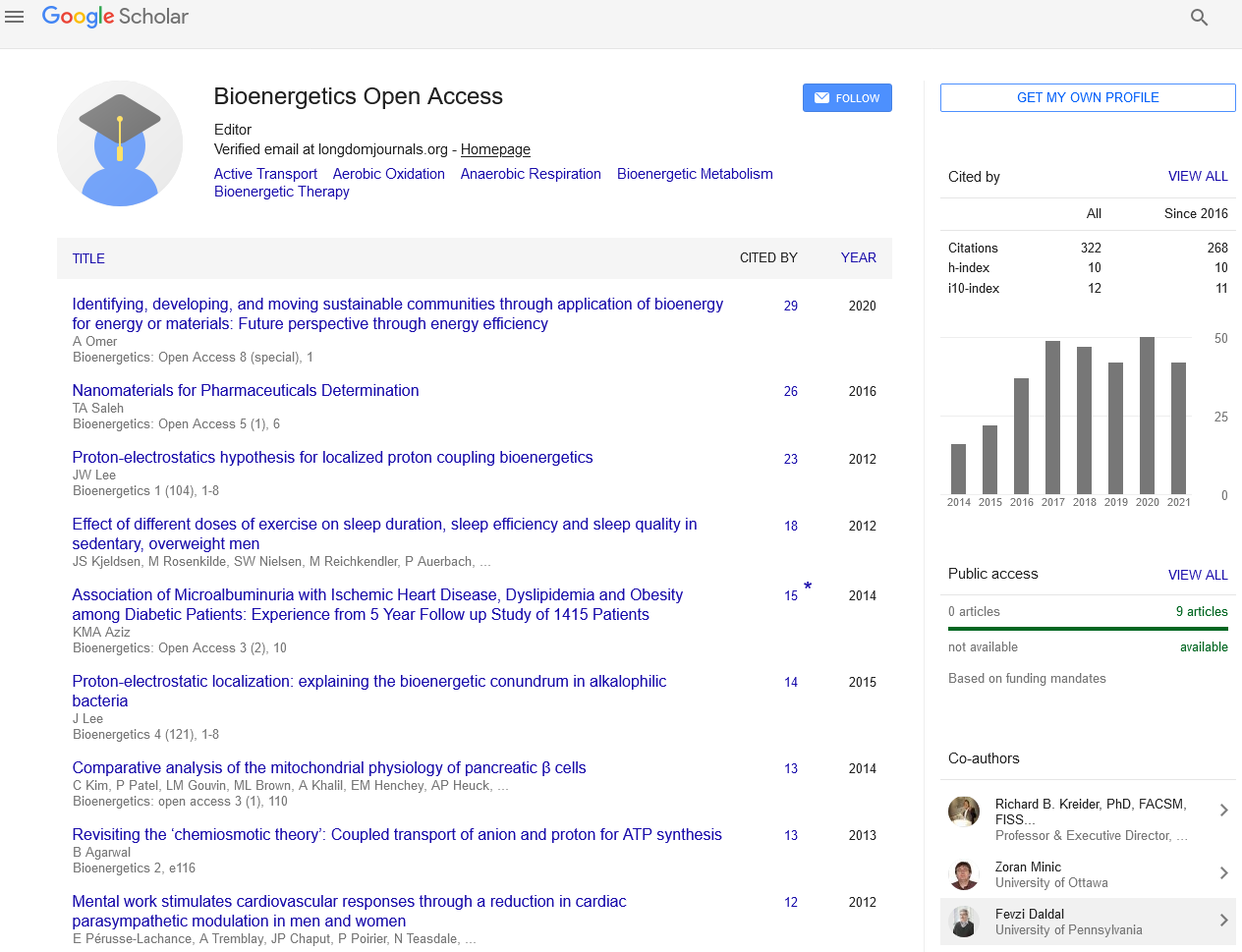Indexed In
- Open J Gate
- Genamics JournalSeek
- Academic Keys
- ResearchBible
- RefSeek
- Directory of Research Journal Indexing (DRJI)
- Hamdard University
- EBSCO A-Z
- OCLC- WorldCat
- Scholarsteer
- Publons
- Euro Pub
- Google Scholar
Useful Links
Share This Page
Journal Flyer

Open Access Journals
- Agri and Aquaculture
- Biochemistry
- Bioinformatics & Systems Biology
- Business & Management
- Chemistry
- Clinical Sciences
- Engineering
- Food & Nutrition
- General Science
- Genetics & Molecular Biology
- Immunology & Microbiology
- Medical Sciences
- Neuroscience & Psychology
- Nursing & Health Care
- Pharmaceutical Sciences
Mechanism of phospholipase A2 G6A activity and regulation revealed by the novel crystal structure
3rd International Conference on Lipid Science and Technology
December 11-12, 2017 | Rome, Italy
Sergey Korolev, Konstantin Malley and Olga Koroleva
Saint Louis University School of Medicine, USA
Scientific Tracks Abstracts: Bioenergetics
Abstract:
Statement of the Problem: Calcium-independent phospholipase PLA2G6A (also known as iPLA2 β or PNPLA9) is a signaling enzyme which hydrolyzes phospholipids to generate potent lipid second messengers in response to stress or injury1,2. The enzyme is a product of the PARK14 gene with strong genetic link to a spectrum of neurodegenerative disorders including Parkinson�??s disease (PD)3,4,5. It is also linked to idiopathic PD and represents one of the major phospholipase activities in the brain. Alterations in iPLA2β function have demonstrated its role in other human pathologies including cardiovascular disease, cancer and diabetes. Correspondingly, novel inhibitors of PLA2G6A have been sought for therapeutic applications. Mechanisms of its activation and tissue-specific functions remain poorly understood. This contrasts with known enzymatic activity and several well-characterized downstream signaling cascades implicated in agonist-induced arachidonic acid release, insulin secretion, vascular constriction/relaxation, store-operated calcium-entry, cellular proliferation, migration and autophagy. Methodology & Theoretical Orientation: We have solved a crystal structure of the full-length mammalian PLA2G6A and investigated mechanisms of the protein activity and interaction with calmodulin. Findings: The first crystal structure of PLA2G6A significantly revises existing mechanistic models6. It demonstrated unexpected oligomeric structure and the conformation of catalytic and auxiliary protein-interaction domains. The structure suggests the mechanisms of inhibition by calmodulin, activation through the autoacylation reaction and the potential role of ATP in stabilizing ankyrin repeats. Conclusion & Significance: The novel crystal structure together with biochemical studies has immediate implications for the mechanisms of the phospholipase activity, of the inhibition and activation as well as of the potential mechanism of tissue specific cellular localization. It provides a well-defined framework to investigate the role of neurodegenerative mutations and the function of PLA2G6A in the brain as well as its role in other diseases.Recent Publications: 1. Jenkins C M, Cedars A and Gross R W (2009) Eicosanoid signalling pathways in the heart. Cardiovasc Research 82(2):240-9. 2. Burke J E and Dennis E A (2009) Phospholipase A2 structure/function, mechanism, and signaling. Journal of Lipid Research 50 Suppl: S237-42. 3. Paisan-Ruiz C et al. (2009) Characterization of PLA2G6 as a locus for dystonia-parkinsonism. Annals of Neurology 65(1):19-23. 4. Lu C S et al. (2012) PLA2G6 mutations in PARK14-linked young-onset parkinsonism and sporadic Parkinson's disease. American Journal of Medical Genetics Part B: Neuropsychiatric Genetics 159B:183-91. 5. Zhou Q et al. (2016) Impairment of PARK14-dependent Ca2+ signalling is a novel determinant of Parkinson's disease. Nature Communications. 7:10332.
Biography :
Sergey Korolev has his expertise in Protein Crystallography and Biochemistry. He is an Associate Professor of Biochemistry and Molecular Biology at Saint Louis University School of Medicine. He has published structural and functional studies of medically relevant proteins including ubiquitination systems, DNA recombination and repair proteins and enzymes. His current projects in lab include structure-function studies of tumor suppressors and proteins involved in neurodegeneration.

